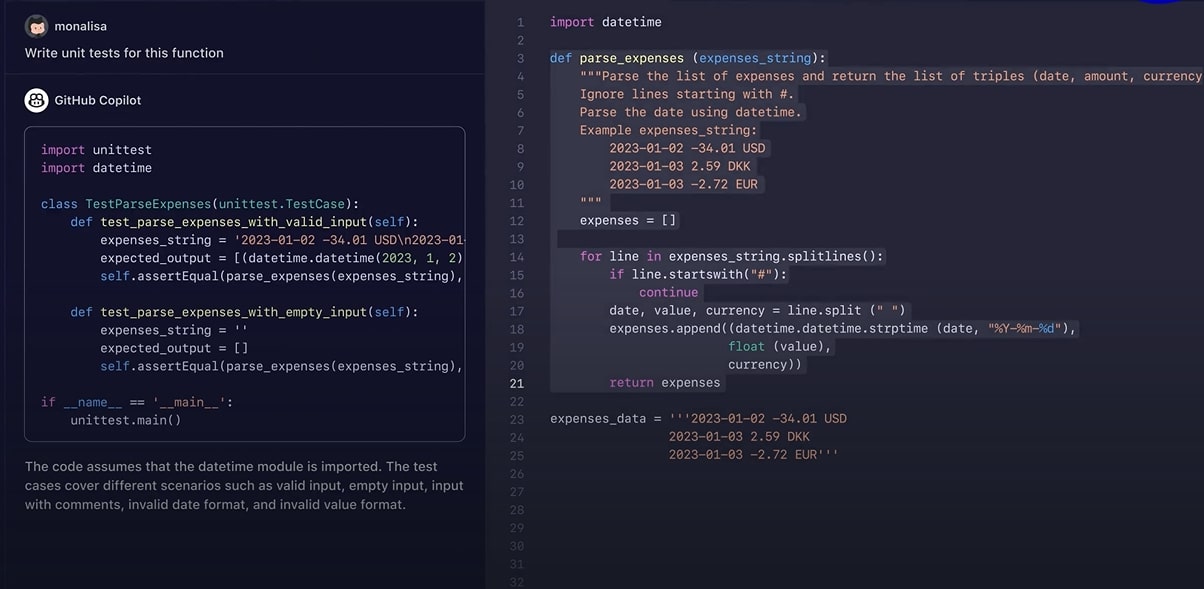Generative AI in software development offers unparalleled potential to revolutionize developers’ approaches to their day-to-day work. By leveraging advanced algorithms and machine learning models, generative AI can automate repetitive tasks, generate high-quality code, and even conceptualize entirely new solutions, freeing developers to focus on the strategic and creative aspects of their work.
This article explores how generative AI in software development enhances efficiency and drives innovation across the development lifecycle. From automating simple coding tasks to enabling developers to experiment with cutting-edge technologies, generative AI is proving to be a game-changer.
So, let’s dive deeper into this transformative technology and discover how it is shaping the future of software development.
Understanding Generative AI in Software Development
Generative AI, powered by large language models (LLMs) and generative adversarial networks (GANs), is transforming software development by automating tasks and enabling innovative solutions. Unlike traditional AI, which relies on fixed rules, generative AI learns patterns from vast datasets to generate context-aware output, such as code or architectural designs.
Definition of Generative AI
Generative AI is built upon large language models (LLMs) and generative adversarial networks (GANs) that can understand, generate, and refine data. These models are trained on massive datasets, allowing them to generate code, simulate scenarios, and even design architectures. In software development, generative AI bridges the gap between human intuition and computational power, enabling developers to produce efficient, scalable, and innovative solutions.
Generative AI stands out for its ability to learn patterns and contexts. Unlike traditional AI, which identifies errors in code based on predefined rules, generative AI goes further. It detects errors and suggests resolutions, often with contextual comments or alternative implementations. This makes it an invaluable tool in modern development workflows.
Applications in Software Development
- Code generation: Tools like GitHub Copilot generate boilerplate code, solve algorithmic challenges, and offer intelligent auto-completions based on the coding context.
- Debugging: AI analyzes runtime logs to detect bugs, suggest fixes, and simulate edge cases, speeding up error resolution.
- Test automation: Generative AI tools generate test cases, automate regression testing, and identify edge cases, ensuring robust software.
- Software design: AI proposes optimized system architectures, from database schemas to microservices layouts, based on requirements and constraints.
- Documentation: Generative AI automates API and system documentation, ensuring accurate, up-to-date resources for developers.
How Generative AI is Enhancing Efficiency in Software Development
Generative AI software development significantly accelerates the software development life cycle by automating repetitive tasks, accelerating workflows, and enhancing processes like integration and deployment. Its capabilities allow developers to focus on complex problem-solving while reducing time spent on routine tasks.
1. Automating Repetitive Tasks
Generative AI excels at handling mundane tasks like writing boilerplate code, refactoring, and generating configuration files. Tools such as GitHub Copilot and OpenAI Codex analyze context to provide intelligent suggestions, enabling developers to maintain focus on higher-level design and logic. By automating such tasks, developers save time and reduce the risk of human error.
2. Faster Development Cycles
AI-powered tools speed up the development process by offering real-time code suggestions, quick error detection, and immediate debugging solutions. For instance, generative AI can identify runtime exceptions, recommend fixes, and even rewrite faulty code. This reduces iteration times and enables teams to deliver features faster without compromising quality.
3. Enhancing Continuous Integration and Deployment (CI/CD)
Generative AI enhances CI/CD pipelines by automating key stages like code integration, testing, and deployment. AI models generate and execute test cases, analyze build logs for anomalies, and predict deployment issues. This ensures smoother, error-free releases while minimizing manual interventions in deployment workflows.
4. Optimizing Resource Allocation
By automating routine coding and testing tasks, generative AI allows developers to allocate their time and expertise to innovation and problem-solving. It ensures faster turnaround for critical features and frees up resources for more strategic initiatives.
Boosting Innovation in Software Development with Generative AI
Generative AI is not just a tool for efficiency—it’s a catalyst for innovation in software development. By augmenting human creativity and enabling new approaches to problem-solving, generative AI helps developers design smarter solutions, explore novel technologies, and rethink traditional workflows.
1. Idea Generation and Conceptualization
Generative AI can act as a brainstorming partner, generating ideas and solutions based on given inputs or requirements. Developers can use AI to outline system architectures, propose feature enhancements, or explore alternative approaches to solve technical challenges. This accelerates the ideation phase and encourages experimentation with bold and unconventional ideas.
2. Optimizing Code and Design
AI-driven tools offer innovative ways to optimize code and system design. They can analyze codebases to suggest performance improvements, propose scalable architectures, or recommend better algorithms. Generative AI also aids in designing microservices, database schemas, and APIs, ensuring efficient and future-ready software systems.
3. Exploring New Technologies
Generative AI enables developers to experiment with emerging technologies without extensive expertise. For example, AI can generate templates for implementing blockchain features, build prototypes for IoT systems, or integrate machine learning models into applications. This lowers the barrier to entry for adopting cutting-edge technologies, fostering innovation across development teams.
Case Studies: Real-World Impact of Generative AI in Software Development
Generative AI has already demonstrated its transformative potential in software development, enabling companies to streamline workflows, improve code quality, and innovate faster. Below is a real-world example showcasing the impact of generative AI tools.

GitHub Copilot, powered by OpenAI Codex, provides contextual code suggestions, reducing development time and errors. For example, companies like Shopify have integrated Copilot into their workflows, enabling developers to write boilerplate code faster and focus on complex business logic. This has significantly accelerated development cycles and enhanced productivity.
Challenges and Considerations in Adopting Generative AI in Software Development
While generative AI holds immense potential for transforming software development, there are several challenges and considerations that organizations must address before fully integrating it into their workflows. These challenges span quality control, ethical concerns, and the shifting roles of developers.
1. Quality Control and Human Oversight
Despite AI’s ability to generate code quickly, human oversight remains critical to ensure the code’s quality, security, and correctness. AI-generated code may inadvertently introduce vulnerabilities, inefficiencies, or bugs, especially when the AI is trained on incomplete or biased data. It is essential for developers to rigorously review AI-generated code, perform unit testing, and validate the results through comprehensive quality assurance (QA) processes.
Example: If a generative AI tool creates a solution that solves a problem but fails to adhere to security best practices, a developer must intervene to address potential vulnerabilities.
2. Ethical Concerns and Bias in AI Models
Generative AI systems, like any machine learning models, can inherit biases from the datasets on which they are trained. This can lead to unintentional biases in the generated code, affecting both functionality and fairness. For example, AI might favor certain coding styles or libraries over others, or it might generate solutions that unintentionally exclude diverse perspectives or users.
Mitigation: To minimize bias, companies must ensure diverse training data sets and continuously monitor and update their models to identify and address ethical concerns.
3. Developer Skill Shift
The integration of AI in software development introduces a fundamental shift in the role of developers. Instead of spending time on repetitive coding tasks, developers now focus on higher-level tasks such as designing algorithms, fine-tuning AI models, and integrating AI-generated code into larger systems. This shift demands new skill sets, including proficiency in AI/ML, data science, and a deeper understanding of how AI models work.
Training and adoption: To enable smooth transitions, companies will need to invest in upskilling their development teams, offering training in AI-powered tools, and adopting a collaborative approach where developers and AI systems work together seamlessly.
The Future of Software Development with Generative AI
The future of software development with generative AI is incredibly promising. AI will not only change how code is generated and optimized but also transform how software is conceived, built, and maintained. As these technologies advance, they will foster a more efficient, collaborative, and innovative development ecosystem, empowering developers and organizations to build software faster and smarter.
However, with these advancements come challenges around ethical considerations, security, and the evolving roles of developers, requiring careful planning and oversight. Ultimately, generative AI will be a catalyst for the next generation of software development, bringing both tremendous opportunities and responsibilities.



